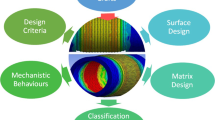Abstract
Background: Endothelial and smooth muscle cells were used as seeding cells and heterogeneous acellularized matrix was used as scaffold to construct the tissue-engineered graft. Methods: A 2 weeks piglet was selected as a donor of seeding cells. Two-centimetre length of common carotid artery was dissected. Endothelial cells and smooth muscle cells were harvested by trypsin and collagenase digestion respectively. The isolated cells were cultured and expanded using routine cell culture technique. An adult sheep was used as a donor of acellularized matrix. The thoracic aorta was harvested and processed by a multi-step decellularizing technique to remove the original cells and preserve the elastic and collagen fibers. The cultured smooth muscle cells and endothelial cells were then seeded to the acellularized matrix and incubated in vitro for another 2 weeks. The cell seeded graft was then transplanted to the cell-donated piglet to substitute part of the native pulmonary artery. Results: The cultured cells from piglet were characterized as endothelial cells by the presence of specific antigens vWF and CD31, and smooth muscle cells by the presence of specific antigen a-actin on the cell surface respectively with immunohistochemical technique. After decellularizing processing for the thoracic aorta from sheep, all the cellular components were extracted and elastic and collagen fibers kept their original morphology and structure. The maximal load of acellular matrix was decreased and 20% lower than that of untreated thoracic aorta, but the maximal tensions between them were not different statistically and they had similar load-tension curves. Three months after transplantation, the animal was sacrificed and the graft was removed for observation. The results showed that the inner surfaces of the graft were smooth, without thrombosis and calcification. Under microscopy, a great number of growing cells could be seen and elastic and collagen fibers were abundant. Conclusion: Cultured self-derived endothelial and smooth muscle cells could be used as seeding cells and heterogeneous acellularized matrix could be used as scaffold in constructing tissue-engineered graft.
Similar content being viewed by others
References
Fuchs, J.R., Nasseri, B.A., Vacanti, J.P., 2001. Tissue engineering: a 21st century solution to surgical reconstruction. Ann. Thorac. Surg., 72(2):577–591. [doi:10.1016/S0003-4975(01)02820-X]
Griffith, L.G., Naughton, G., 2002. Tissue engineering—current challenges and expanding opportunities. Science, 295(5557):1009–1014. [doi:10.1126/science.1069210]
Hoerstrup, S.P., Zund, G., Sodian, R., Schnell, A.M., Grunenfelder, J., Tunina, M.I., 2001. Tissue engineering of small caliber vascular grafts. Eur. J. Cardio-Thorac. Surg., 20(1):164–169. [doi:10.1016/S1010-7940(01)00706-0]
Huang, H.M., Ren, H., Liu, Z.Y., 2001. Making of acellularized matrix and seeding of smooth muscle cells. Biomedical Engineering and Clinic, 5(2):181–184.
Kim, B.S., Putnam, A.J., Kulik, T.J., Moomey, D.J., 1998. Optimizing seeding and culture methods to engineer smooth muscle on biodegradable polymer matrices. Biotechnol. Bioeng., 57(1):46–54. [doi:10.1002/(SICI)1097-0290(19980105)57:1<46::AID-BIT6>3.0.CO;2-V]
Langer, R., Vacanti, J.P., 1993. Tissue engineering. Science, 260(5110):920–926.
Luttun, A., Carmeliet, G., Carmeliet, P., 2002. Vascular progenitors: from biology to treatment. Trends Cardiovasc. Med., 12(2):88–96. [doi:10.1016/S1050-1738(01)00152-9]
Sodian, R., Lemke, T., Fritsche, C., Hoerstrup, S.P., Fu, P., Potapov, E.V., Hausmann, H., Hetzer, R., 2002. Tissue-engineering bioreactors: a new combined cell-seeding and perfusion system for vascular tissue engineering. Tissue Eng., 8(5):863–870. [doi:10.1089/10763270260424222]
Vacanti, J.P., Langer, R., 1999. Tissue engineering: the design and fabrication of living replacement devices for surgical reconstruction and transplantation. Lancet, 354(Suppl 1):SI32–SI34.
Wu, S.F., Huang, H.M., 2004. In-vitro culturing and differentiating of peripheral endothelial progenitor cell. J. Shanghai Second Medical University, 24(2):159–161.
Xue, L., Greisler, H.P., 2003. Biomaterials in the development and future of vascular grafts. J. Vasc. Surg., 37(2):472–480. [doi:10.1067/mva.2003.88]
Author information
Authors and Affiliations
Additional information
Project (No. 99ZB14018) supported by the Natural Science Foundation of Shanghai, China
Rights and permissions
About this article
Cite this article
Huang, Hm., Wu, Sf. & Ren, H. Tissue-engineered graft constructed by self-derived cells and heterogeneous acellular matrix. J. Zhejiang Univ. - Sci. B 7, 351–356 (2006). https://doi.org/10.1631/jzus.2006.B0351
Received:
Accepted:
Issue Date:
DOI: https://doi.org/10.1631/jzus.2006.B0351




